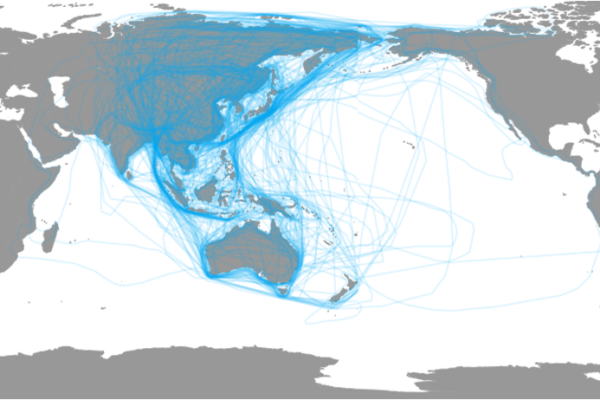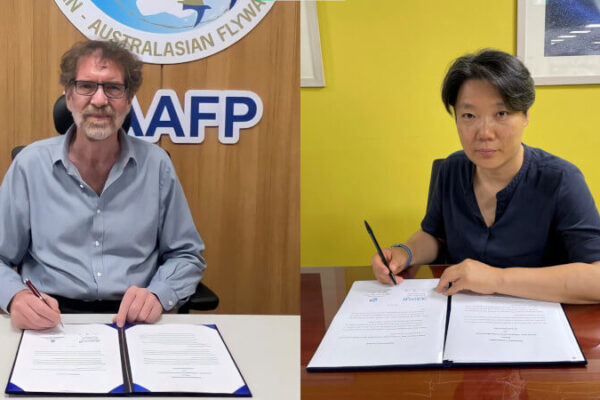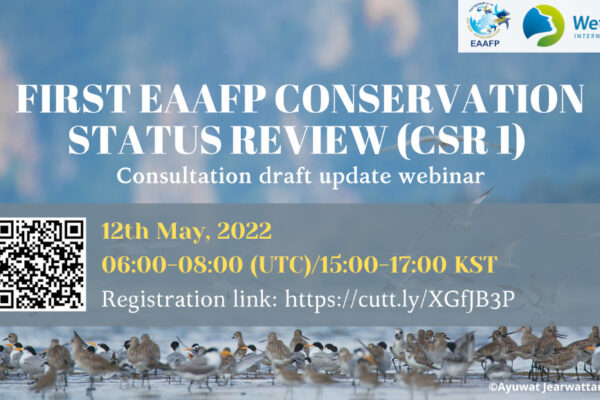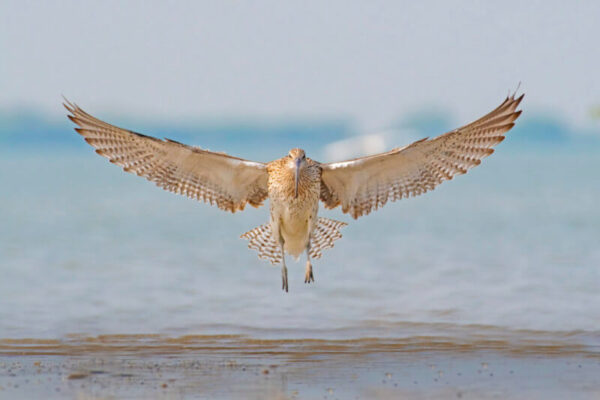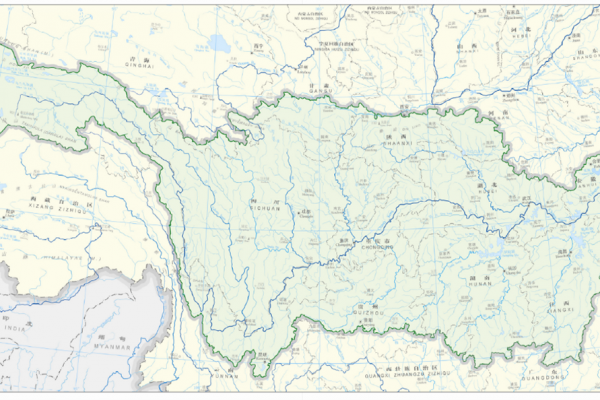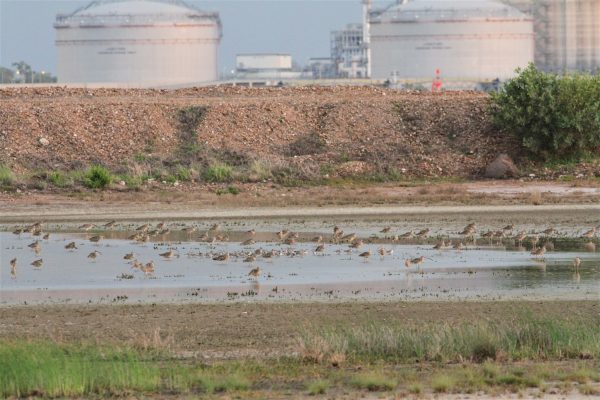-
The first Conservation Status Review for East Asian – Australasian Flyway now published for stronger waterbirds conservation
There is an urgent need for ensuring updated waterbird population status information in order to protect migratory waterbirds that use the East Asian - Australasian Flyway (EAAF), many of which are globally threatened. The findings are based on a new report, the first EAAF Conservation Status Review (CSR 1) contributes to Objective 3 of the EAAFP Strategic Plan 2019-2028. The CSR 1 was produced by Wetlands International in collaboration with The East Asian–Australasian Flyway Partnership (EAAFP) Partners, Working Groups, Task Forces and experts. It is the first time population distribution ranges of all migratory waterbird populations was mapped in the EAAF. The report covers 726 populations of 216 migratory waterbird species in EAAF and provided 1% population size estimates updates to the 5th edition of Waterbird Population Estimates (WPE5) which was published in 2012. Thirty-four (16%) of the EAAFP populations belong to species that have a globally threatened status (Critically Endangered, Endangered or Vulnerable) in the IUCN Red List of Threatened Species 2021 and a further 25 (12%) are Near Threatened. The review identifies major gaps and limitations in knowledge about the distribution, size estimates and trends of many populations which include 248 (90%) migratory waterbird populations have population size estimates. 45 (16%) of these population estimates are census-based, 81 (29%) are expert opinion and 122 (44%) are best guess. Data is currently not sufficient to propose population size estimates for 28 (10%) populations including herons, egrets, gulls, terns, rails, crakes, and allies. Of the 90% of EAAF populations with a size estimate, 58% have an estimate of 100,000 individuals or fewer. While 32% of populations have a geomean of the minimum and maximum estimate greater than 100,000 individuals, with 4% greater than 1,000,000 individuals. All population size estimates, trends and boundary maps (produced for the first time) are available to the public on the Waterbirds Populations Portal: http://wpp.wetlands.org/ The report urges strengthening existing monitoring programmes, establishing new monitoring programmes, and improving the systems and procedures to collate and synthesise new information – which requires local and national stakeholders engagement along with international collaborations – among many more recommendations. Image of composite of the biogeographic population maps of 216 migratory waterbirds of 276 species that includes a minimum of two countries of the EAAF. © Wetlands International. Understanding the current size and status of populations of waterbirds in the EAAF is a core requirement for the EAAFP to deliver its strategy, which is to see that migratory waterbirds and their habitats in the East Asian – Australasian Flyway are recognized and conserved for the benefit of people and biodiversity. Doug Watkins, Chief Executive of EAAFP stated that, “The first Conservation Status Review of all EAAF migratory waterbird populations reveals the joint effort and contribution from our Partners, Working Groups and Task Forces, experts and researchers. The maps are a new and valuable asset for the EAAFP. Thanks to the hard work by the Wetlands International team who leads the review, this report provides crucial new information to support the designation of Flyway Network Sites, protected areas, assessment of wetlands, evaluation of population and distribution changes of migratory waterbirds. These are all essential for effective conservation measures.“ “This review is fundamental to protecting bird species, as with protecting all biodiversity and prioritizing conservation action, which needs to be based on reliable and up-to-date knowledge. The review presents an opportunity to deeply understand what is at stake when it comes to some of our dwindling bird species, so that we can better work together to protect them. Protecting bird species needs all stakeholders, especially governments, private sector, conservationists, scientists and researchers, as well as local communities and site managers, guided by up-to-date knowledge at the heart of it all.” says Ward Hagemeijer, Senior Advisor, Wetlands International, a waterbird and wetland ecologist. “For several species, the Asian Waterbird Census (AWC) data has been the sole source of information to calculate population trends. This demonstrates once again that the annual AWC programme that collates information collected by a large network of volunteers in every country provides critically valuable data for flyway assessments and needs to be strengthened.” adds Dr Taej Mundkur, lead author of the report, a nature conservationist with a doctorate in waterbird ecology and Senior Advisor at Wetlands International. Prof. Nick Davidson, the Chair of EAAFP Technical Sub-Committee notes that “The CSR 1 report marks an important step for evaluating over 270 populations of migratory waterbird species in the EAA Flyway. The process also identified major gaps and limitations in the knowledge of the distribution, size estimates and trends of migratory waterbirds. Strengthening monitoring schemes and programmes, information exchange as well as capacity building to researchers, site managers, citizen scientists, are critical to address the gaps. On top of it, collaboration and support to fill in the gaps are necessary, and we hope that Conservation Status Review of migratory waterbirds in EAA Flyway would continue on a regular basis.” The preparation of the review has been generously supported by the EAAFP Secretariat and the Norwegian Environment Agency. Development of the Waterbirds Population Portal on which this information is presented has been supported by the Environment Agency of Abu Dhabi. This review has been undertaken in collaboration and coordinated jointly with the EAAFP Secretariat. The information on waterbirds collected through the Asian Waterbird Census (AWC) has been the basis for a majority of population trend assessments and other information presented in this report, with a tremendous amount of support and untiring efforts of a large network of volunteer participants, dedicated bird watchers, citizen scientists and conservationists. Check the following documents: EAAF CSR1 Summary Report [PDF] Annex 3 EAAF populations size estimates and trends [PDF] Annex 3 EAAF populations size estimates and trends [XLS] For more information, interviews, and images, please contact Taej Mundkur (Taej.Mundkur[at]wetlands.org).
Continue reading -
EAAFP Secretariat signs MOU with Seoul Science Center, Ro Korea
Dr. Jung-Kyu Lee, Head of the Seoul Science Center (SSC) and Mr. Doug Watkins, Chief Executive of the…
Continue reading -
First EAAFP Conservation Status Review (CSR1) consultation draft update webinar
Following the MOP 10 adopted Decision 12 “Development of a Conservation Status Review of Migratory Waterbird Populations for the EAAFP” in 2018, the first EAAFP Conservation Status Review (CSR1) was kicked off on 8th April 2021, to ensure researchers, government agencies, conservationists and other stakeholders can get access to up-to-date information of waterbird population estimate. After one year of extensive consultation and valuable feedback, the EAAFP Secretariat jointly with Wetlands International are pleased to host a webinar to present the final draft of the First EAAF Conservation Status Review (CSR1) with all Partners, Working Groups/Task Forces, and other stakeholders about this important project. The details of the webinar are as follows: Date: 12th May, 2022 (Thur) Time: 06:00-08:00 UTC/15:00-17:00 KST Registration link: https://us02web.zoom.us/meeting/register/tZwrfuqppjgpG9KQUAQkhLvNMROVCNrMovX3 The provisional agenda is as follows: Welcoming remarks by Doug Watkins, Chief Executive, EAAFP Secretariat Introduction by Nick Davidson, Chair, EAAFP Technical Sub-Committee Presentation of the CSR1 report by Taej Mundkur and Tom Langendoen, Wetlands International Open Discussion moderated by Doug Watkins Plans to finalise the CSR1 report by Taej Mundkur Closing remarks by Robb Kaler, Chair, EAAFP Watch the recording of First EAAFP Conservation Status Review (CSR1) consultation webinar
Continue reading -
New study says protected areas don’t always boost biodiversity: management is crucial
The impact on wildlife of designating protected areas such as national parks varies, according to the largest ever global study of their effects on waterbirds. The findings show that…
Continue reading -
The First Asian Ornithological Conference convened
The last two decades have seen a tremendous increase in the development of scientific studies and conservation of birds in Asia. The…
Continue reading -
Launch of the Coordinated survey in middle and lower reaches of Yangtze River 2020/2021
The extensive wetlands of the middle and lower reaches of Yangtze River are critical to the function of the whole Yangtze ecosystem, which in turn provides essential services to…
Continue reading -
Working coastal wetlands used widely by EAAF shorebirds
It is well-known that extensive loss and degradation of wetlands has occurred worldwide and is a major contributor to the decline of shorebirds in the EAAF. Artificial (i.e. human-made)…
Continue reading -
Call for 2016 Application to the Asian Waterbird Conservation Fund
Fion Cheung, AWCF Secretariat The ‘Asian Waterbird Conservation Fund (AWCF)’ has been established to provide financial support to projects on the ground in Asian part of the East Asian–Australasian…
Continue reading
- 1
- 2

